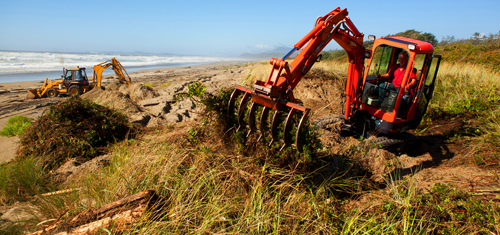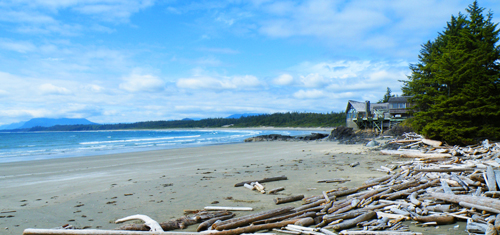Restoration work in Pacific Rim
Pacific Rim National Park Reserve
Overview
© Jordan Odney
Parks Canada is committed to maintaining the ecological integrity of Canada’s protected areas, as well as repairing damaged ecosystems for the benefit of future generations. Pacific Rim National Park Reserve has been actively involved in restoring two such fragile ecosystems, salmon streams and sand dunes.
Salmon stream restoration

The unique landscape of the Kennedy Flats Watershed, next to Pacific Rim National Park Reserve’s Long Beach Unit, traditionally supported large salmon populations that have been an essential food source for people and wildlife in the area for millennia. Large-scale industrial logging, between the 1950s and early 1990s, significantly damaged local salmon streams, causing drastic declines in the wild salmon population.
Parks Canada, together with the Central Westcoast Forest Society, is working with various interested parties to repair this damage so that salmon can once again flourish in these streams.
» Learn more
Sand dune restoration

Sand dunes are tough places to live, shaped by scouring winds, shifting sands, harsh temperatures, poor nutrients and high levels of salt. Dune plants have unique traits which help them survive these harsh conditions. Wildlife lives here too, although you are more likely to see signs of their presence.
Parks Canada and its team of committed scientists, volunteers and staff members began an ambitious five-year restoration project in 2008, restoring the largest open dune system in British Columbia. The team’s primary responsibility is to remove two invasive beachgrass species that have dramatically altered the integrity of the dune ecosystem.
» Learn more
- Date modified :
